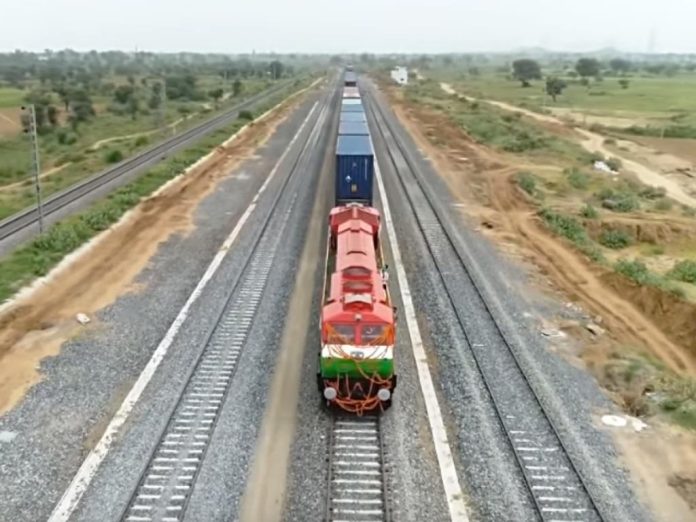The Ministry of Railways announced a successful trial on the New Pilkhani-New Shambhu section of the Eastern dedicated freight corridor (Eastern-DFC), marking a significant milestone in its development.
“With the successful trial on the New Pilkhani-New Shambhu section of the Eastern Dedicated Freight Corridor, commercial freight train operations are set to commence on the Pilkhani-Sahnewal section,” stated the Ministry on the social media platform X.
The Eastern-DFC, poised to revolutionise freight transportation across the country, spans a length of 1,337 km, while the Western-DFC covers an extensive 1,506 km, creating a comprehensive network.
The Eastern-DFC spans 1,337 km from Sahnewal near Ludhiana in Punjab, crossing through Haryana, Uttar Pradesh, and terminating at Sonnagar in Bihar.
While the construction of the Eastern-DFC has been completed, work on the Western-DFC is ongoing, with 1,176 km out of 1,506 km already finished.
The Western-DFC, connecting Dadri in Uttar Pradesh to Jawaharlal Nehru Port in Mumbai, passes through five states Uttar Pradesh, Haryana, Rajasthan, Gujarat and Maharashtra.
During the Vibrant Gujarat Global Summit (2024), Prime Minister Narendra Modi highlighted the Eastern-DFC, emphasising its role in connecting regions such as Gujarat, Maharashtra, and the eastern coastline through dedicated freight corridors.
“Whether it’s Gujarat, Maharashtra, or our eastern coastline, today they are being connected through dedicated freight corridors,” remarked Prime Minister Modi.
Dedicated freight corridors in the country form a network of broad gauge railway lines exclusively serving freight trains, aiming to enhance the speed and efficiency of freight services, reports Financial Express.
The DFC project is strategically aligned with the National Rail Plan, which sets a bold objective: to increase the railway’s modal share in India from the existing 28 per cent to an impressive 44 per cent by the year 2051.
Crucially, the DFC is not just a railway project; it’s a linchpin of the National Logistics Policy, aiming to reduce logistics costs from the current 15 per cent of GDP to a more sustainable 8 per cent by 2030.
Furthermore, the DFC’s capacity expansion is instrumental in realising Indian Railways’ ambitious objective of achieving a freight loading capacity of 3,000 MT by 2030.


